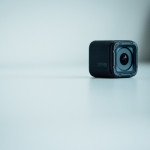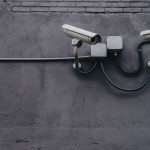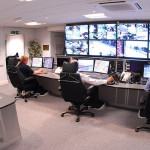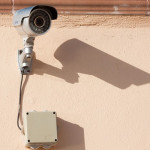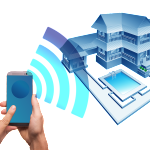Hidden Spy Cameras
Before, spy cameras, like the ones seen in the movies, were merely pipe dreams. The ones that were available never really lived up to the expectation. Fortunately, technology improved over time and hidden cameras became more accessible to everyone.
Thanks to the Internet of Things, Wi-Fi enabled hidden cameras and DVRs are affordable and being used more frequently. You can use these wireless hidden cameras to keep an eye on your children, watch your home while you’re on vacation, or even monitor your business remotely. Hidden spy cameras can be monitored via an app or specialized software that you may access from your smartphone or tablet.
By employing wireless hidden cameras, you can discreetly keep an eye on things. Also, they are less susceptible to tampering as they cannot be easily detected. While visible CCTV surveillance cameras are meant to deter people from wrongdoings, hidden cameras are intended to catch people in the act.
Most hidden cameras are wireless to remain inconspicuous, however, not all are truly wireless. Some are battery powered, while others may need to be prudently plugged in or attached to the electrical system in some way.
What usually confuses people when they see the term “wireless” is that it more commonly refers to the Wi-Fi connection, meaning you don’t have to connect it to any sort of landline or Ethernet cable. Most of these cameras come with their own software and must be configured to your network. IT may sound complicated, but it is no more difficult than connecting any other device to the Internet. However, some spy cameras require that users have an adequate working knowledge of IoT technology to operate them.
Before installing a hidden camera, be sure to review the laws regarding hidden cameras, surveillance, and recording.
Browse our selection of nanny cams, wireless surveillance, and hidden spy cameras online at SecurityCamExpert.com. If you have any questions or need assistance, please call 888-203-6294.
For the latest news and updates, connect with us on Facebook, Google+, Twitter, LinkedIn, and Pinterest!
Why You Should Invest In Business Surveillance Systems
As the New Year approaches, you may resolve to invest in a better business security camera system. Increasing your security measures can provide numerous benefits and will likely pay off in the long run. Here are a few ways a security system can help improve your business.
- Increase Customer And Business Safety
The presence of security cameras not only helps to deter burglars from targeting your business, but it can also bring peace of mind to your customers and employees.
- Reduce False Claims
There have been instances where employees fake an injury to claim worker’s comp, as well as customers who may make false claims against the business or employees. Security cameras can prevent these instances or provide evidence to refute these claims.
- Minimize Employee Theft
Security cameras and surveillance can positively influence behavior, resulting in employees complying with company policies.
- Avoid Loitering Around Premises
You not only want to secure the inside of your business, but protecting the perimeter is just as important. Loitering may send the wrong message to your customers, and may negatively affect your business.
- Prevent Site Littering
Aside from loitering, litter scattered around your business can damage the business reputation. You want to maintain an appealing look for your customers, and excessive litter can be detrimental.
- Replace Full-Time Security Guards
Rather than having a security guard on the grounds, you can actively monitor your premises from within or remotely.
- Track Business Traffic
Keeping track of your business traffic can improve your business success. You can identify the busiest hours and adjust your staffing accordingly. It may also give you insight to the most efficient business hours for your location.
- Tie multiple locations into one surveillance system.
If you have more than one location to monitor, an advanced security system will allow you to connect the different security systems. That way, you may be able to remotely monitor all sites from one app or system.
If you need help finding the right security camera system for your business, feel free to visit us online at SecurityCamExpert.com or call 888-203-6294 to speak with a representative. You can also connect with us on Facebook, Google+, Twitter, LinkedIn, and Pinterest.
Night Vision Cameras Vs. Thermal Cameras: Which Is Better For You?
When it comes to securing the perimeter of your home or business, you want a surveillance system that can perform in various conditions. For 24-hour monitoring, night vision cameras have been the popular solution. However, the emergence of thermal cameras has provided a more advanced solution. Learn more about the different types of night vision cameras and how thermal cameras differ from them.
Low-Light Cameras
These are also known as day and night cameras and electronically and automatically adjust lighting capture settings based on the time of day to produce optimal video images. During the day, IR cut filters are used to “cut out” IR illumination, allowing for color images. At night, the filter is removed entirely to allow the maximum amount of visible and IR light to reach the sensor and produce a monochrome image. The downside to these cameras is that they are completely dependent on lighting conditions. That is, too much light or no light at all will result in unusable images. Thus, the amount of visible light available drastically affects the image.
IR Cameras
IR cameras have a lens that is surrounded by LEDs which emit a beam of near-infrared energy to bounce off objects in its field of view. The image sensor is then able to create a picture; however, distance plays a crucial role in performance. Because the reflected IR light can only reach so far, these cameras are often limited to short-range applications.
Night Vision Cameras
Night vision goggles (NVG) and cameras capture visible light photons. As the photons penetrate a photocathode tube (which acts as an image intensifier), they are converted to amplified electrons that pass through a phosphorous screen and converts them back to visible light to create a picture (often in a greenish hue). Because these devices need just the right amount of visible light to function, they are virtually useless when there is ample light outside (ex. twilight) or in conditions where light is blocked (ex. smoke) or no light is available.
Thermal Cameras
Rather than performing based on light availability, these cameras produce video surveillance images based on the measurement of the electromagnetic heat radiation emitted by all objects and individuals. Their performance is unaffected by bright lights, complete darkness, foliage, and light fog. No matter how small, differences in heat are picked up and produce images with high contrast, which are essential to the success of video analytics and intrusion detection. These cameras may be better suited for properties which require strict perimeter security (ex. oil and gas industries, data centers, mines, power stations), and are often combined with other layers of protection (ex. fence sensors, microwaves, PTZ cameras).
Thermal cameras also boast long-range detection capabilities, thus, reducing the number of cameras needed. They can also be a good substitute for fences where fence installation is not possible. For example, ports and oil refineries have acres of water and land to secure and monitor. Thermal imaging and video analytics can create “virtual fence” and can be a more feasible and affordable solution than installing a physical barrier.
Do you use night vision cameras or thermal cameras to protect your property? Share with us on Facebook, Google+, Twitter, LinkedIn, and Pinterest.
If you need help deciding which night vision or other security cameras will best suit your surveillance needs, please feel free to contact us at 888-203-6294 or visit SecurityCamExpert.com today!
Expensive Security System Mistakes
Sometimes you end up paying more than you should when it comes to home security systems. Whether it is from lack of research or sheer convenience, there are ways to effectively invest in your home security without breaking the bank. Review these common home security mistakes to ensure you are getting the most for your money.
• Mistake: Your first option was your only option.
Don’t just go with the first company you find -do your research. Check out both local and national companies to compare rates and get free quotes when possible. This step will help you discover who truly values your security versus those looking for a big sale.
• Mistake: You didn’t consider lifestyle changes.
Aside from thinking about your current needs, you should also consider your future plans. For example, if you’re planning on growing your family, you may want more surveillance in the nursery. Or, if you’re single, you may relocate a few times before settling in to a spot, so you may want to inquire about cancellation or relocation services.
• Mistake: You’re overlapping cameras.
While the idea of having multiple angles on entryways and high traffic areas sounds safer, it could be unnecessary. Focus more on getting the best angles with the least amount of cameras. This will save you money on equipment and could make it easier to manage your system.
• Mistake: You didn’t talk about discounts.
When it comes to discounts, it doesn’t hurt to ask. You could be missing out on special deals and offers, such as a Veteran or senior citizen discount, or you may even be able to work out a payment plan rather than paying it all up front.
• Mistake: You haven’t updated your insurance.
No matter what kind of equipment you choose, be sure to let your home insurance provider know. These systems may add value to your home, and could possibly save you some cash on your monthly payment. But before committing to system, you should check with your provider.
• Mistake: You have more than you need.
In relation to the overlapping cameras, you may have opted for the most comprehensive system when you really could do with a simple set up. Evaluate your needs, such as how many entry points you wish to monitor, and you can tailor your system accordingly. Remember that when it comes to security cameras, choose quality over quantity.
If you’ve made any of these mistakes, you can still make them right. If you need help, please feel free to call us at 888-203-6294. We can help with surveillance equipment, site surveys, and security camera installation. Visit SecurityCamExpert.com to browse our selection and connect with us on Facebook, Google+, Twitter, LinkedIn, and Pinterest.
Why You Need IP Security Cameras
Security camera systems have made great advances over the years. From traditional analog CCTV technology to IP networking, security camera quality and features have improved to provide better monitoring and security. Some of these enhanced benefits include higher resolutions resulting in clearer images, fewer cameras covering larger areas, and thus, a lower total cost of ownership. Many businesses and homeowners are opting to trade up to network IP security cameras, network video recorders (NVRs) and cloud-based storage for more convenient and affordable security.
Network IP Cameras & Assisted Living Communities
Aside from protecting homes and company headquarters, assisted living communities can also reap the benefits of installing network IP security cameras.
In the way that security cameras deter burglars from targeting your property, in assisted living facilities, the aim is to deter abuse and neglect. By strategically placing these cameras in and around the facility, family members can put their worries at ease by reviewing stored footage to ensure that no mistreatment is taking place and that the staff is providing the proper care. For facility managers, video surveillance footage can provide evidence should an employee or resident be charged with abusive behavior.
Network IP cameras can also help the staff keep a closer eye on residents or patients. For those residents at risk for falls, staff can potentially prevent falls and injuries, or respond faster to those incidents. Medical equipment such as oxygen tubes may get dislodged, and staff can get to the rooms faster to fix the problems. In the case of memory units, the entrances and exits can be closely monitored to prevent residents from wandering outside of supervised areas, and can help protect the facility from possible intruders.
These security cameras can also prevent employee theft. Although we would rather think that this is uncommon, it is not unheard of for residents to report their belongings stolen. Whether these claims are accurate or not, cameras provide evidence to prove what really happened. Also, facilities often find that supplies may go missing. To counter these losses, IP cameras can document the incident or prevent it from occurring in the first place.
Of course, opponents of these security measures stand firm in their belief that it makes it more difficult to recruit staff and that employees will have trouble making sound decisions for fear of families challenging their actions. The problem with this stance is that numerous other careers and industries are under constant surveillance with little to no issues arising. Proponents of employee surveillance believe these measures will help workers to make better decisions and avoid any questionable situations.
Why Should You Upgrade To IP Security Cameras?
As stated, upgrading to IP security cameras comes with a myriad of enhanced benefits. Aside from the obvious video quality improvement, IP cameras are able to utilize your existing CAT5 or CAT6 Ethernet cabling, saving time and money on installation. The intelligent video features include facial recognition, motion detection, audio detection and people-counting, to name a few. Also, because they are connected to the Internet, owners are able to remotely view live video, search archived footage, and receive alerts via any PC, tablet, or smart phone.
Choosing the Right IP Security Camera
Because the various IP camera choices on the market, it can be a bit overwhelming. Here are some important features you should know about before choosing the best IP cameras for your needs.
- Camera Types
There are three design options for IP cameras: bullet, dome and PTZ (Pan, Tilt, Zoom). As inferred by their name, bullet cameras resemble a bullet shaped and best suited for directional monitoring. They typically do not possess the capability to zoom in or move. Dome cameras are shaped like domes and ambiguously monitor areas, aiding in its role of deterring misconduct. “Speed domes” spin quickly to capture a broader range of images. Lastly, PTZ cameras are ideal for covering large areas. These cameras can move and capture different angles, thus, delivering the work of several fixed-point cameras in one single device. PTZ surveillance cameras may also be preprogrammed to scan an area or may be controlled remotely.
- Resolution
IP camera resolution is the amount of visual data that can be captured and is measured in megapixels. It is often provided in horizontal and vertical pixel dimensions (ex. A camera that has 1280 x 1024 resolution is 1.3MP because 1280 x 1024 = 1,310,720 or 1.3MP). A higher resolution means the camera can capture more data, resulting in improved video clarity.
- Power over Ethernet (PoE)
This allows you to transmit power over the data cable, which can run up to 100 feet. This will save you money and decrease installation limitations. In addition, the PoE standard 802.3af supports higher power ratings needed for motorized cameras (ex. PTZ).
- Wide Dynamic Range
If you are monitoring an area that has challenging lighting conditions, you will want a camera that has good wide dynamic range (WDR). This will control the backlight and remove shadows to produce adequate footage in difficult environments.
- IR LED
Infrared (IR) LED lighting is like night vision, allowing cameras to capture clear footage in low to no light conditions. IP cameras can see infrared light and when wavelengths reflect back, it is as if the room is illuminated and the camera can record video. Night vision capabilities improve with more IRLEDs and longer ranges.
- Weather/Vandal Resistance
If you are using your surveillance cameras outdoors, be sure to choose weatherproof and “vandal resistant” cameras, which will often be IP66 rated and IK10 rated respectively. This will safeguard against water or dirt, which can interfere with your recordings or damage your equipment. Some cameras even offer thermostatic controls, which will help to prevent condensation forming over the lens.
When upgrading to IP cameras within your home, business, or in assisted living communities, be sure to evaluate your needs and review your options before making a final decision. If you need assistance, please feel free to call us at 888-203-6294 to speak with a representative and request a free quote. You may also visit SecurityCamExpert.com to browse our inventory of network IP cameras and surveillance equipment.
Connect with us on Facebook, Google+, Twitter, LinkedIn, and Pinterest for the latest news and updates!
Stay Safe This Halloween
When you think of Halloween, fun things like candy and costumes come to mind. But Halloween is also a dangerous night, as both vehicle and pedestrian traffic increases. Vigilance and early planning can help to ensure safety.
If you have surveillance cameras, they can help give you a sense of security and deter bad behavior. Before Halloween night, be sure that your security cameras are working properly. If you are out trick-or-treating or at a party, you can access your live feed to ensure that your property is safe. If you are at home, you can see when trick-or-treaters approach while monitoring for mischievous behavior or vandalism.
Below are more Halloween safety tips to keep your kids and loved ones safe.
- Avoid oversized costumes or costumes with excessive flowing fabric, such as capes or long sleeves. These pose a risk as loose clothing can graze a jack-o-lantern or open flame. Also, oversized costumes can cause kids to trip and fall. Be sure that costumes fit appropriately and check to see that shoelaces are tied before heading out.
- If possible, choose a brightly colored costume that drivers can spot easily. You can also use reflective tape or stickers, glow sticks or flashlights to increase visibility.
- Face paint and makeup are a safer choice than masks, which may obstruct vision. If a mask is worn, make sure that it fits properly and securely, and whenever possible, cut large eye holes.
- Inspect the treats. Anything that is tampered with, has loose wrappers, or just doesn’t seem right should be disposed. Also, homemade treats should be trashed, unless you know the person who gave it to your child and are sure that it is safe.
- Children under the age of 13 should always be supervised by an adult. Older teens should trick-or-treat in groups and have a set curfew. Creating a route ahead of time will help to keep track of your kids as well.
- Walk slowly. As with any other night, be mindful of cars and make eye contact with drivers. Always walk on sidewalks and cross at the crosswalks or traffic signals. If there are no sidewalks, then it is strongly advised to walk facing traffic and as far to the left as possible.
- Children should only go to well-lit houses and remain on the porch within street view. Also, remind children to never cross between parked cars and to look both ways before crossing.
- Drivers: back out slowly while keeping a watchful eye for children. High times for trick-or-treating are usually from 5:30pm-9:30pm. Distracted driving is dangerous and illegal, on Halloween and every day. If you must, pull over and park in a safe location, otherwise, it can wait.
Share your own Halloween safety tips with your peers and us on Facebook, Google+, Twitter, LinkedIn and Pinterest!
Visit SecurityCamExpert.com to browse our vast collection of quality security cameras and CCTV surveillance system packages. If you have any questions or would like to request a free quote, please feel free to call 888-203-6294.
Artificial Intelligence For Video Surveillance
There’s no denying that video surveillance technology has come a long way over the years. From grainy videos in its early stages to the quality software and clarity today, video surveillance continues to make great strides and advancements.
History
The goal of security cameras and surveillance systems is to capture, detect, and deter any unlawful behavior in and around homes, businesses, and public areas. Before, installing a security camera system was a costly and laborious job, involving lots of wires and cables running throughout the building. As technology progressed, security cameras became more accessible and affordable, allowing more users the opportunity to invest in their security. Now there are numerous DIY solutions that make it easy for homeowners to install and set up on their own security systems.
For businesses, implementing a team of people to actively monitor security cameras at all times was once the only option. Now, much of the monitoring aspect of security and surveillance systems can be automated. Rather than having the mundane task of watching numerous monitors, security cameras now have the ability to detect any suspicious or abnormal behaviors and will alert a security officer as necessary.
While we have seen the security industry flourish over the years, this is just the tip of the iceberg. Our technology will continue to advance and amaze us in ways we never thought possible.
Artificial Intelligence
Artificial intelligence (AI) in video surveillance enables the “smart” features we now see with security cameras. In general, security cameras enable us to monitor situations in real-time or go back to review previous footage. With the integration of AI technology, not only can we monitor in real-time, but potential issues can be identified before they become real problems.
With the emergence of video analytics, footage can be analyzed immediately to identify any abnormal activity or threats early on. This technology helps the software ‘learn’ what is normal in order to identify unusual behavior and is meant to make up for human error, rather than replace human monitoring all together.
While it was always a goal to integrate AI and video surveillance, the technology, from a hardware standpoint, was not ready. One of the issues that needed to be addressed was decreasing the power demand to a level low enough that would allow the technology to be embedded into the cameras.
As more cameras emerge with new AI technologies and processes, we will begin to see more advanced features including crowd density monitoring, facial recognition, stereoscopic vision, and behavior analysis.
Behavior analysis in particular is what a lot of tech companies are focusing on. By implementing a technology that can identify and recognize precursor patterns associated with crimes and other bad behavior, we may be able to greatly improve public safety and security.
A great example comes from the West Japan Railway, where it was found that 60% of people hit by trains in Japan were intoxicated. They have now installed security cameras that can automatically search for and detect signs of intoxication. Sleeping on benches, stumbling, falling, or standing motionless for long periods of time are behaviors that are recognized by the AI system. Human attendees are then notified and sent to check on the person.
Of course, a conversation about video surveillance always includes concerns about privacy. No one wants to feel like they are constantly being monitored, but developers insist that these systems know when to stop collecting information and monitoring. As these technologies continue to develop, you may soon be able to “teach” your system when to record and in which situations recording should halt.
Although it is still in its early stages, AI technology and video surveillance is heading in a positive and exciting direction. Mass adoption may still be a ways to go, but it’s great to see AI being applied in a new setting.
What are your thoughts on artificial intelligence and the video surveillance industry? Share with us on Facebook, Google+, Twitter, LinkedIn, and Pinterest. Browse our selection of security cameras and equipment online at SecurityCamExpert.com. To learn more about our installation services or to request a free quote, please call 888-203-6294.
Safety, Security, & Storage
Personal and public safety is always a top priority. Recent events have shown us that, whether planned or spontaneous, violent attacks can be extremely tragic and devastating. These also remind us that improving our security and surveillance systems is vital and show us what needs to be addressed and how we can safeguard against future threats.
Border & Airport Security
While border security is a controversial subject, in terms of security, the border or perimeter is essentially a vulnerable point of entry. Because of this, governments are looking to improve surveillance and secure boundaries. One way they are stepping up security is by employing remote video surveillance and analytics.
For example, the Department of Homeland Security have strategically placed towers to provide remote video surveillance along the southwestern and northern borders of the United States. The U.S. Customs and Border Patrol agency believe more towers would help to expand surveillance and provide more protection in remote areas.
Airports act in a similar fashion, as they represent a type of boundary and serve as a key point of entry for international travelers. With that said, airports must be monitored and secured carefully to protect not only passengers and visitors, but also aircraft, terminals, parking facilities, fuel facilities, airline buildings and power supply facilities. In addition, airports are often a prime target for terrorists since large, diverse crowds congregate, making security both critical and a major challenge.
Thus, video surveillance is crucial to airport security systems. Security cameras are placed throughout the various facilities to monitor crowd activity, perimeter gates and fencing, and other high traffic areas (ex. security checkpoints, baggage handling, hallways, seating areas, entrances/exits). Live streams are monitored continuously with the aid of video analytics and facial recognition is used for staff as well as guests. This technology quickly identifies who has authorized access to certain areas and can spot known suspects and criminals. Furthermore, virtual tripwires help to secure certain boundaries, and behavioral analytics algorithms help to detect any unusual behaviors, including left-behind packages.
To maintain optimal security and protection at borders and airports, security systems must monitor suspicious activity over time, track movements of watch-list suspects and share said information among agencies. It is a complicated process which depends on the sufficient work of real-time and archival video surveillance footage. And while advances in security camera technology (ex. higher-resolution capability, panoramic viewing, onboard analytics and integrated audio) are incredible, they also increase the need for sufficient storage capacity.
Before you make the decision on video surveillance storage, here are some factors to consider:
Retention Time
This can have a dramatic impact on the amount of storage necessary. Due to regulations and litigation issues, retention time is increasing, thus more storage capacity is necessary.
For example, HB 976 was passed in Georgia in 2016, requiring law enforcement to retain video from body-worn cameras and vehicle-mounted devices for a minimum of 180 days. In addition, any video recording related to a criminal investigation or pending litigation must be retained for 30 months.
Aside from complying with regulations, the value of video may increase in regards to analyzing people and patterns are observed over longer periods of time. It is important to consider long-term storage needs when making retention policy decisions.
Access
When it comes to storage, options include enterprise digital video recorders, boxed appliance network video recorders, PC-based network video recorders, enterprise storage platforms, tape, and cloud storage. Some make it easier than others to retrieve and share archived footage.
Before deciding on a storage solution, take into account the individuals who may need to access to the footage, how quickly they will need it and whether or not video files will be shared with other agencies.
Cost
Storage accounts for a good chunk of video surveillance budget since many opt for high-performance disks over tape (a more cost-effective solution). In order to minimize costs while still maintaining quality performance, you may want to size disk storage to meet ingest performance requirements, and then build long-term retention capacity using tape or cloud.
Video surveillance is a vital tool for law enforcement and other government officials, and the expanded use of more powerful cameras along with new video analytics greatly improves security. However, as mentioned, new capabilities have a significant impact on video storage as well.
Not all storage solutions are the same, thus, taking the time to understand how each solution works and finding a balance between retention time, accessibility, and cost is crucial to making the best decision.
If you need security camera systems and storage for your home or business, visit SecurityCamExpert.com to browse our stock. To schedule a site survey or request a free quote, please call 888-203-6294. You can also connect with us on Facebook, Google+, Twitter, LinkedIn, Pinterest, and Yelp!
The Progression of Video Surveillance Technologies
Over the years, video surveillance has made great improvements in regards to design, features, functionality and application. As our technologies continue to evolve, the surveillance industry is bound to grow and expand even further.
In 1996, Axis Communications introduced the first IP Camera. This was originally used for monitoring the sea for oil spills, saving their customers from having to take two flights a day. Decades later, digital cameras are now the norm, from entertainment to security purposes.
When it comes to security, because we are very visual and use our eyes more than any other senses, we tend to prefer video. This is why we see CCTV surveillance cameras nearly everywhere these days. But how can we improve it?
Video surveillance can be valuable to businesses, however, monitoring the live feed 24/7 is not very realistic. Other detection tools, such as perimeter breach or motion detection, in conjunction with an alarm or alert system helps to improve security. But, as with most things, it has its flaws. These can include problems with detecting the breach, a bad judgment call in regards to what is seen, how long the feed is monitored and the length of backtracking.
Video analytics is more prevalent these days and makes efforts to address this issue. Thanks to advancing software and artificial intelligence (AI), video analytics can determine a human from an animal, eliminating false alarms caused by a pet at home. It also eliminates human error and takes motion detection a step further, as some systems can also distinguish between a known house member and a stranger.
Business and home protection continues to advance as more security camera systems integrate video analytics along with alarms, PIR sensors, and smart recordings. And thanks to edge computing, these technologies are becoming more accessible. By performing data processing at the edge of the network, close to the source of data, edge computing ultimately optimizes system performance.
But aside from all these advancements and improvements, privacy is still an important issue. Many feel uncomfortable having cameras watching over them and having their video streamed into the cloud. But what if our security systems became so advanced that video surveillance became unnecessary?
Hypothetically, an “Optical Analytic Sensor” could use edge computing to process new, updated analytics without having to transmit video. Instead, detailed descriptions of events would serve as data, eliminating bandwidth requirements and video privacy issues. Using advanced tools and AI, this sensor device could learn how to distinguish between known users and strangers. Thus, the device could automatically grant access t authorized users, eliminated passwords, codes, pins or keys. In a commercial setting, this device could sound an alarm for any unauthorized persons while ignoring those who are allowed to be there.
Again, this is all hypothetical and we may be years away from such an advanced and sophisticated system, but this shows how video analytics have the potential of enhancing various security applications.
What do you think the future holds for video analytics and surveillance technology? Share your predictions and thoughts with us on Facebook, Google+, Twitter, LinkedIn and Pinterest.
Visit SecurityCamExpert.com to shop our stock of security cameras, DVRs, NVRs, and more. If you have any questions, please call us at 1-888-293-6294 and our team will be happy to assist you.
Choosing A Smart Home Security System
More and more people are turning their homes into smart homes. What once was seen as an extravagant luxury for the wealthy has now become accessible and affordable for nearly all homeowners.
While there are many ways to upgrade, smart home security seems to be the top priority for most home owners. Aside from protecting your home from burglars, fires, and other potential threats, you may also benefit from smart home security by getting rebates or special discounts from insurance companies.
Advances in technology have enabled smart home security manufacturers to offer varying levels of home security systems at different price points. Here’s how you can protect your home, from basic to advanced features.
If You Are On A Strict Budget…
At the bare minimum, smart home security starts with a camera. Smart security cameras can provide footage to identify burglars after the crime has been committed or can alert owners when unauthorized activity is detected, allowing burglars to be caught in the act. These cameras not only offer security for your home, but can be used as baby monitors and nanny cams. Special features may include the ability to differentiate between human and pets to prevent false alarms, as well as two-way audio to enable communication with anyone in the room
As beneficial as a one-camera setup can be, there are also limitations. The first and most obvious limitation being that one camera can only cover one room. Also, you must actively monitor the feed to maintain security. If you would like a system that needs less attention, you may want to explore other, more advanced options.
If You Are Looking For More Comprehensive Home Security…
You will want to look for a home security system that addresses the different ways your home security can be breached. Additional security components include motion sensors, door and window sensors, and surveillance signs.
- Motion sensors are installed on walls to detect movement through an infrared sensor. If you have pets, you can adjust the height to avoid false alarms.
- Door and window sensors are attached accordingly and either sound an alarm and/or alert your device when these are opened.
- While it’s not exactly smart technology, surveillance signs can help to deter burglars from even targeting your home. If deciding between a home with or without a security system, burglars will likely choose the latter because there’s less of a risk of getting caught.
If You Want A Highly Sophisticated Home Security System…
For around-the-clock surveillance of your home, you may want to invest in a security company that offers monitoring services for a monthly fee. While the hardware is almost the same as the aforementioned systems, when the alarm is triggered, the security company is notified and they assess the danger and alert the necessary authorities. Since you may not have your phone or device available at all times (ex. movies, traveling), this service can come in very handy.
There are plenty of DIY and professional smart home security solutions on the market today. Which one is your system of choice? Share with us on Facebook, Google+, Twitter, LinkedIn, and Pinterest.
Protect your home with an affordable CCTV surveillance camera system from SecurityCamExpert.com. Browse our stock online or call 888-203-6294 to discuss your options with a representative today!
